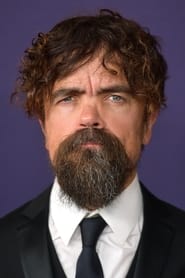
Ask Your Own Question
What is the plot?
In "Histories & Lore: The Drowned God," the episode begins with a dark and stormy atmosphere, setting the tone for the tale of the Drowned God, a deity worshipped by the Ironborn of the Iron Islands. The narrator, a voice that embodies the essence of the sea, introduces the Drowned God, describing him as a powerful figure who rules over the waters and is associated with death and rebirth. The visuals depict crashing waves and tumultuous seas, emphasizing the connection between the Drowned God and the ocean.
The narrative then shifts to the Iron Islands, where the Ironborn are shown performing rituals in honor of the Drowned God. The rituals are depicted as both eerie and reverent, with men and women gathered around the sea, chanting and invoking the deity's name. The imagery captures the raw power of the ocean, with waves crashing against the rocky shores, symbolizing the might of the Drowned God. The Ironborn believe that the sea is a source of strength and that their god demands sacrifices, which are often represented through the act of drowning.
As the story unfolds, the episode delves into the significance of drowning as a form of worship. The narrator explains that the Ironborn view drowning not as a death but as a passage to a new life, a rebirth in the eyes of the Drowned God. This belief is illustrated through scenes of Ironborn warriors being submerged in the sea, emerging from the water as if reborn. The visuals are striking, showcasing the contrast between the dark depths of the ocean and the light of the surface, symbolizing the transition from death to life.
The episode also highlights the importance of the Drowned God in the culture and identity of the Ironborn. The narrator describes how the Ironborn see themselves as the true heirs of the sea, with their way of life deeply intertwined with the worship of the Drowned God. The visuals depict the rugged landscape of the Iron Islands, with their harsh cliffs and relentless waves, reinforcing the idea that the Ironborn are shaped by their environment and their faith.
Key figures in Ironborn culture, such as priests and leaders, are shown performing ceremonies that honor the Drowned God. These ceremonies often involve the use of water and the act of drowning, which is portrayed as a sacred rite. The episode captures the intensity of these rituals, with participants displaying a mix of fear and reverence as they engage in acts of devotion. The emotional weight of these scenes conveys the deep-seated beliefs of the Ironborn and their unwavering commitment to their god.
The narrative also touches on the conflict between the Ironborn and the mainland, illustrating how the Drowned God influences their actions and decisions. The Ironborn are depicted as fierce and proud, driven by their faith to conquer and raid the lands beyond the sea. The visuals of ships sailing into battle, with the Ironborn warriors shouting their war cries, emphasize their ferocity and determination, all in the name of the Drowned God.
As the episode progresses, the theme of sacrifice becomes more pronounced. The narrator explains that the Drowned God demands offerings, and the Ironborn are willing to pay the price for his favor. Scenes of sacrifices being made, whether through drowning or other means, highlight the lengths to which the Ironborn will go to appease their deity. The emotional turmoil of the participants is palpable, as they grapple with the weight of their actions and the belief that their sacrifices will ensure their strength and success.
The episode concludes with a powerful reminder of the Drowned God's omnipresence. The narrator emphasizes that the sea is both a giver and a taker, reflecting the duality of life and death. The final visuals show the relentless waves crashing against the shore, a testament to the enduring power of the Drowned God and the unwavering faith of the Ironborn. The atmosphere remains heavy with the weight of their beliefs, leaving viewers with a sense of the profound connection between the Ironborn and their god.
What is the ending?
In the episode "Histories & Lore: The Drowned God," the narrative concludes with a focus on the worship of the Drowned God, a deity revered by the Ironborn of the Iron Islands. The episode emphasizes the significance of the sea and the rituals associated with the Drowned God, showcasing the deep connection between the Ironborn and their faith. The episode ends with a reflection on the power of the Drowned God and the belief that those who die at sea are destined to return to him.
As the episode unfolds, it begins with a sweeping view of the tumultuous sea surrounding the Iron Islands, the waves crashing against the rocky shores, symbolizing the raw power of nature and the Drowned God. The narrator's voice, deep and resonant, introduces the Drowned God, describing him as a figure of both fear and reverence among the Ironborn. The imagery shifts to scenes of Ironborn warriors, their faces weathered and fierce, as they prepare for a ritualistic drowning, a rite of passage that signifies their devotion to their god.
The camera captures the solemnity of the ceremony, with participants clad in dark, tattered garments, their expressions a mix of determination and trepidation. As they are submerged in the cold, unforgiving waters, the viewer can sense the internal struggle of each individual, torn between the fear of death and the desire for acceptance by the Drowned God. The ritual is depicted with vivid detail, the water swirling around them, the sound of their gasps for air echoing in the background, creating a palpable tension.
The narrative then transitions to the teachings of the Drowned God, emphasizing the belief that the sea is a source of life and death. The Ironborn are shown engaging in various acts of worship, including the recitation of prayers and the offering of sacrifices to the waves. The visuals are striking, with the sun setting over the horizon, casting an ethereal glow on the water, symbolizing the duality of the Drowned God as both a giver and taker of life.
As the episode progresses, it delves into the lore surrounding the Drowned God, recounting tales of legendary figures who have embraced his teachings. The stories of these characters are interwoven with the imagery of the sea, illustrating their fates as they navigate the treacherous waters of their beliefs. The viewer is left with a sense of the Ironborn's unwavering faith, their lives intricately tied to the whims of the ocean and the Drowned God.
In the closing moments, the narrator reflects on the enduring legacy of the Drowned God, suggesting that his influence will continue to shape the lives of the Ironborn for generations to come. The episode concludes with a final shot of the turbulent sea, a reminder of the power and mystery of the Drowned God, leaving the audience with a lingering sense of awe and reverence for the beliefs that define the Ironborn culture.
Is there a post-credit scene?
In the episode "Histories & Lore: The Drowned God" from the "Game of Thrones" specials, there is no post-credit scene. The episode focuses on the lore surrounding the Drowned God, a deity worshipped by the Ironborn of the Iron Islands. It delves into the beliefs and rituals associated with this god, including the significance of drowning and resurrection in the faith of the Ironborn. The narrative is presented through a series of animated sequences and voiceovers, providing a rich tapestry of the cultural and spiritual life of the Iron Islands without any additional scenes after the main content.
What is the significance of the Drowned God in the faith of the Iron Islands?
The Drowned God is central to the beliefs of the Ironborn, representing the harsh and unforgiving nature of the sea. Worshippers believe that the Drowned God demands sacrifices, often in the form of drowning, to show devotion. This faith shapes the culture of the Iron Islands, emphasizing strength, resilience, and the acceptance of death as a part of life.
How do the Ironborn perform the drowning ritual to honor the Drowned God?
The drowning ritual involves submerging a person in water until they are on the brink of death, symbolizing a rebirth. This act is meant to demonstrate the individual's commitment to the Drowned God. Once revived, the person is considered 'reborn' and is often marked by the experience, gaining a deeper connection to their faith.
What role does the Drowned God play in the conflict between the Ironborn and the mainland?
The Drowned God serves as a rallying point for the Ironborn in their quest for independence and dominance over the mainland. Their belief in the Drowned God fuels their desire to raid and conquer, as they see themselves as chosen by the sea. This religious fervor often leads to clashes with other factions, particularly those who do not share their beliefs.
Who are the key figures associated with the worship of the Drowned God?
Key figures include priests known as 'Drowned Men,' who lead the rituals and ceremonies dedicated to the Drowned God. Notable characters like Balon Greyjoy and his children, especially Theon and Yara, are also deeply influenced by this faith, which shapes their identities and motivations throughout the series.
What are the symbolic elements associated with the Drowned God and how do they reflect Ironborn culture?
Symbolic elements include the sea, drowning, and the imagery of storms and ships. These elements reflect the Ironborn's harsh lifestyle, their reliance on the sea for survival, and their belief in the inevitability of death. The Drowned God embodies the duality of life and death, emphasizing the Ironborn's acceptance of their fate and their valor in facing the dangers of the ocean.
Is this family friendly?
The episode "Histories & Lore: The Drowned God" from Game of Thrones contains several elements that may be considered objectionable or upsetting for children or sensitive viewers.
-
Religious Themes: The episode explores the worship of the Drowned God, which includes rituals that may be unsettling, such as drowning as a form of rebirth.
-
Violent Imagery: There are references to violence and death associated with the practices of the followers of the Drowned God, which may be disturbing.
-
Dark Atmosphere: The overall tone of the episode is somber and dark, reflecting the harsh realities of the world of Westeros, which may be intense for younger viewers.
-
Supernatural Elements: The portrayal of the Drowned God and the associated myths may be frightening or confusing for children.
-
Themes of Sacrifice: The episode touches on themes of sacrifice and the cost of devotion, which may be heavy topics for sensitive audiences.
These aspects contribute to a mature viewing experience that may not be suitable for all children.
























